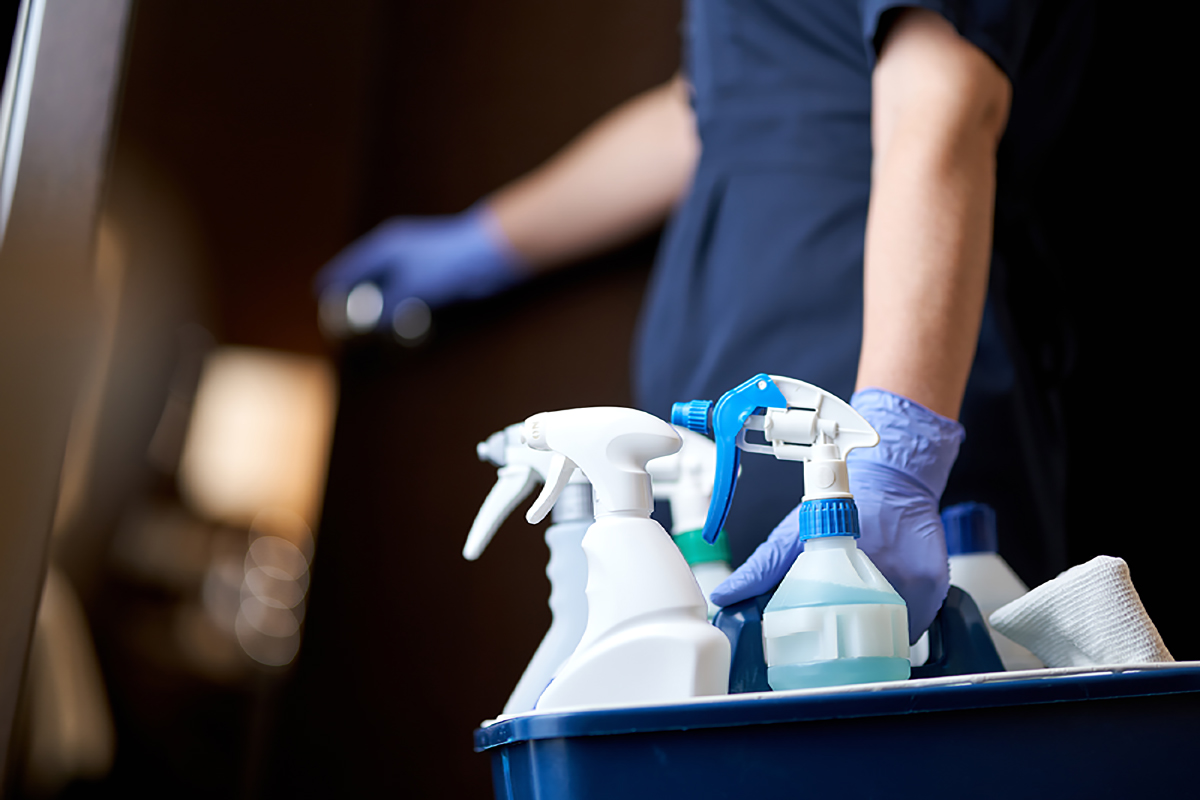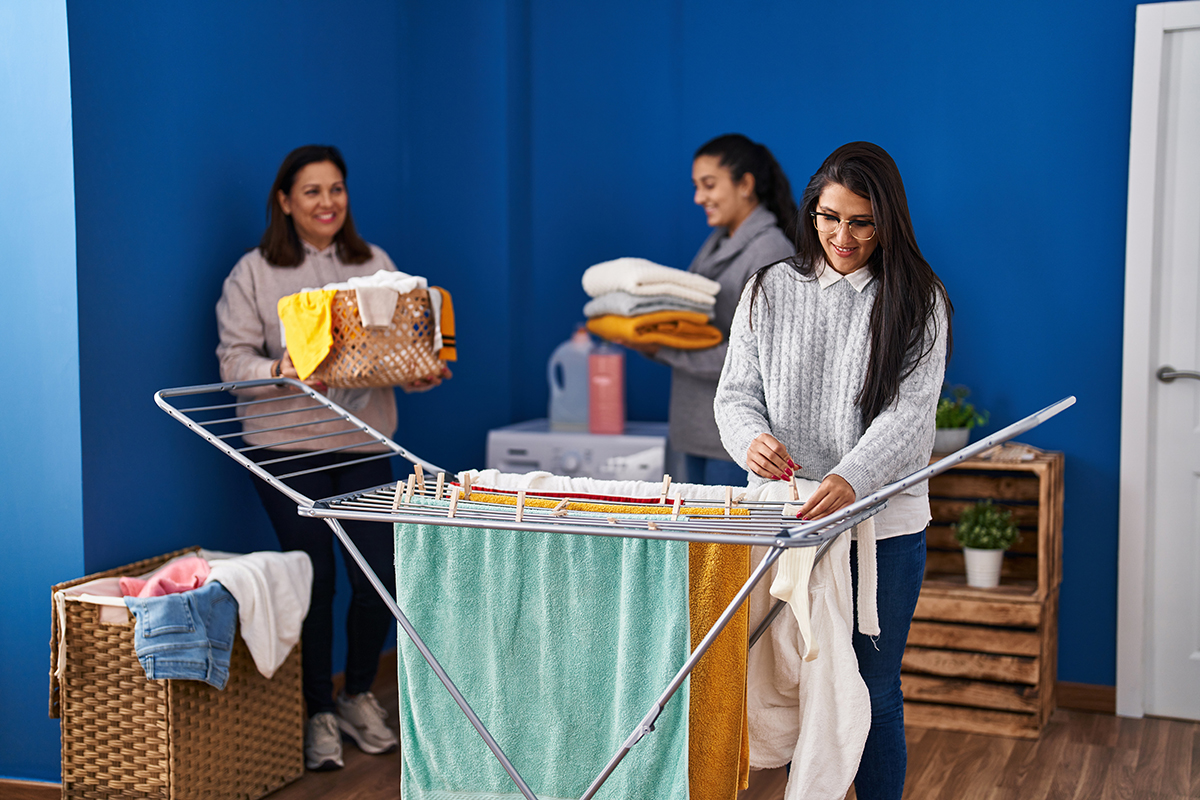A clean and organized living space is necessary for everyone. Unfortunately, this is a challenge for hoarders who tend to struggle with getting rid of stuff, resulting in cluttered living spaces. Consequently, this makes cleaning their homes or rooms a laborious task. However, hoarders can plan how to clear their living spaces effectively with a checklist, which is a list of cleaning and organizing tasks. Typical tasks include preparation, sorting, decluttering, cleaning, and creating a storage system.
Hoarders can also seek the help of friends, family members, or professional cleaners to clean their living space. In such cases, the hoarder cleaning checklist can help coordinate people as it is a plan of action to be undertaken by each individual or the team as a collective. This plan can be tailored to the specific situation to account for the severity of the disorder and the work to be done.
This article discusses hoarding disorder and a checklist that can be used to declutter and clean the house of a hoarder. It highlights the essential components of such a template and the best practices when using one for cleaning a cluttered living space.
What is Hoarding Disorder?
Hoarding is a disorder characterized by a compulsive need to accumulate possessions and feelings of anxiety or discomfort about discarding such items, even if they have no actual use or value.
This makes it challenging for affected people to clean their houses. It is not to be confused with collecting – which is an organized, intentional, and themed accumulation of valuables. Hoarding is largely impulsive and involves little to no planning. The disorder affects people of all ages, genders, and backgrounds. It can often result in strained social relationships, reduced quality of life, and increased risk to your physical health through tripping incidents, unsanitary living conditions, and fire hazards.
note
Hoarding disorder is different from collecting and being messy, which are not signs of the mental disorder.
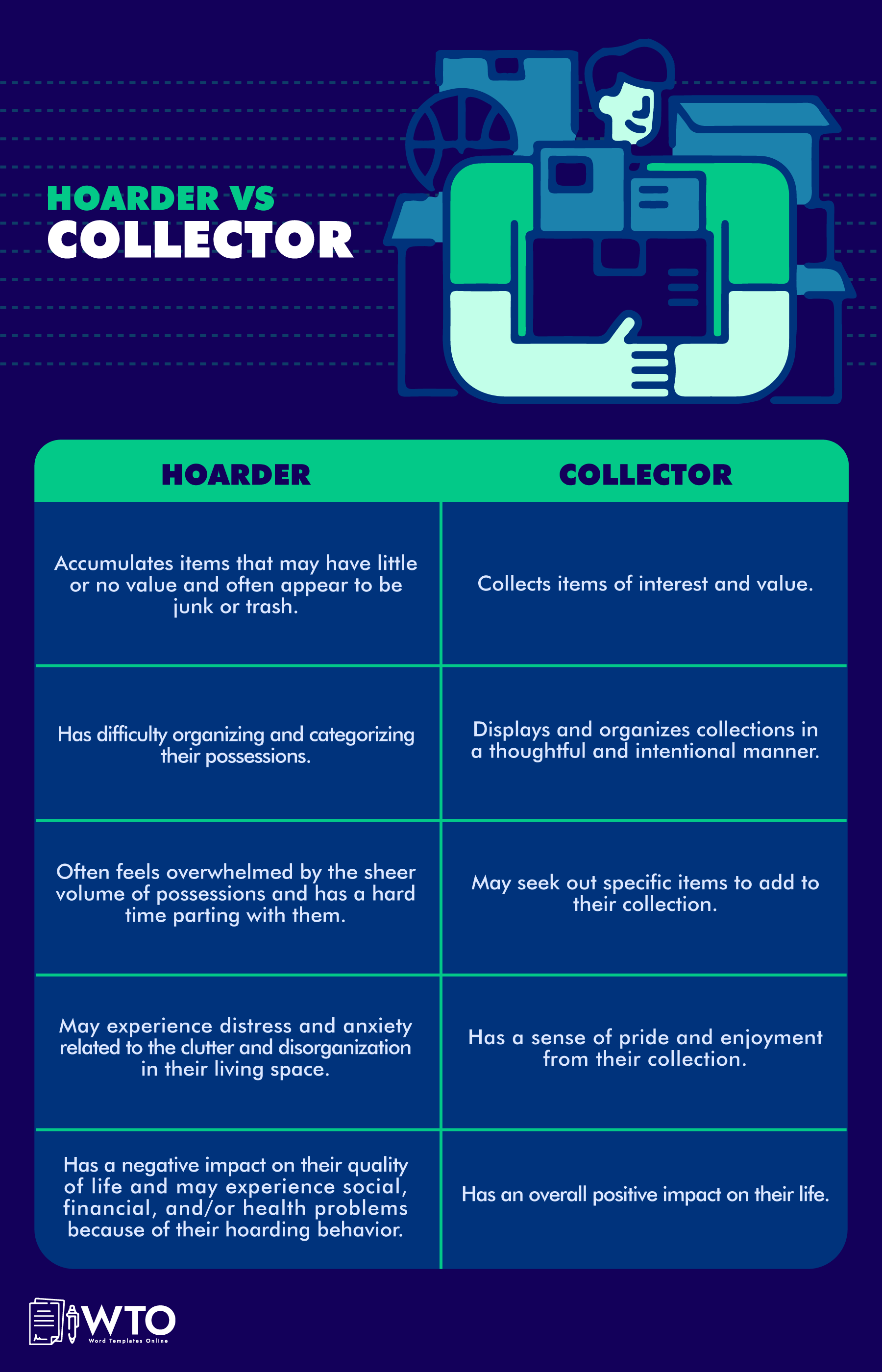
Free Templates
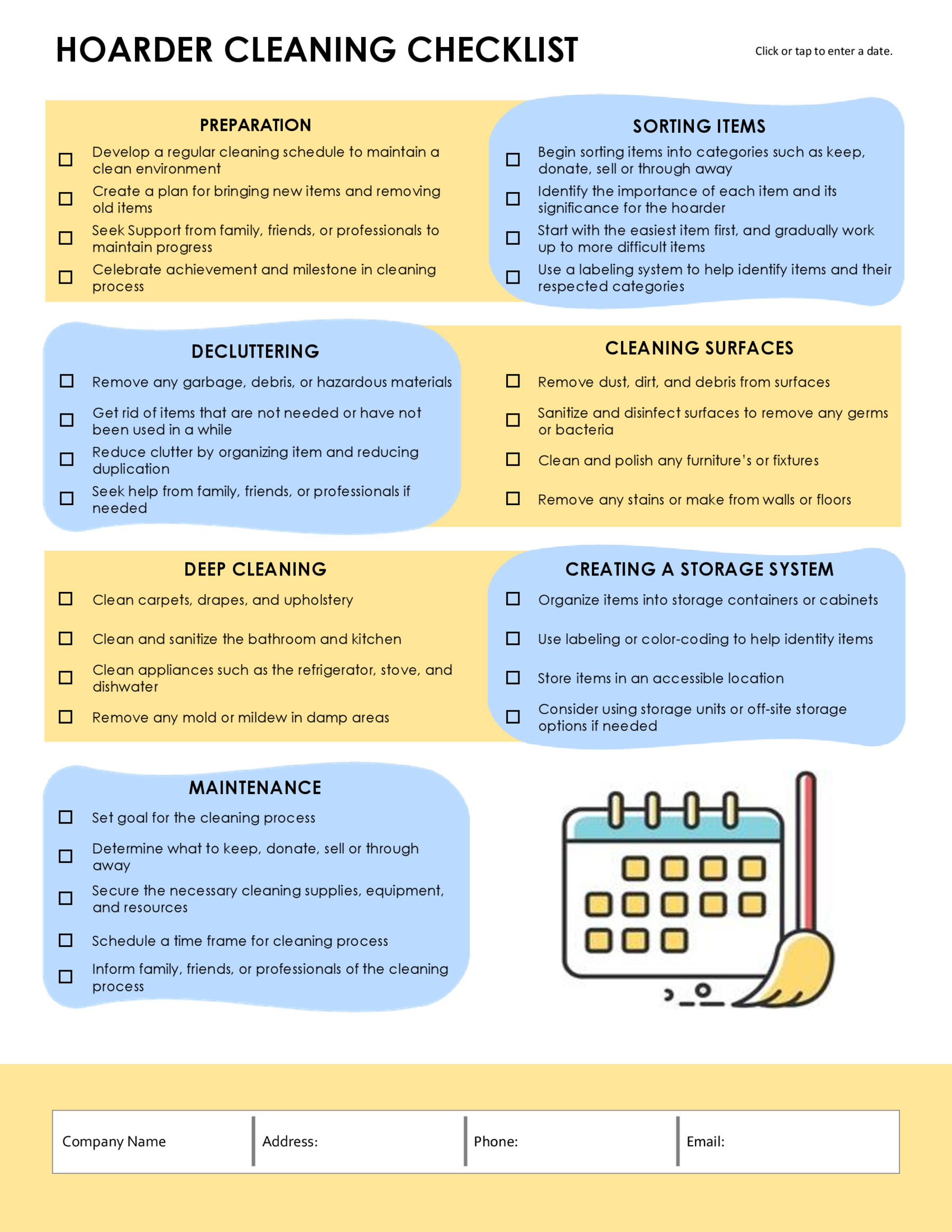
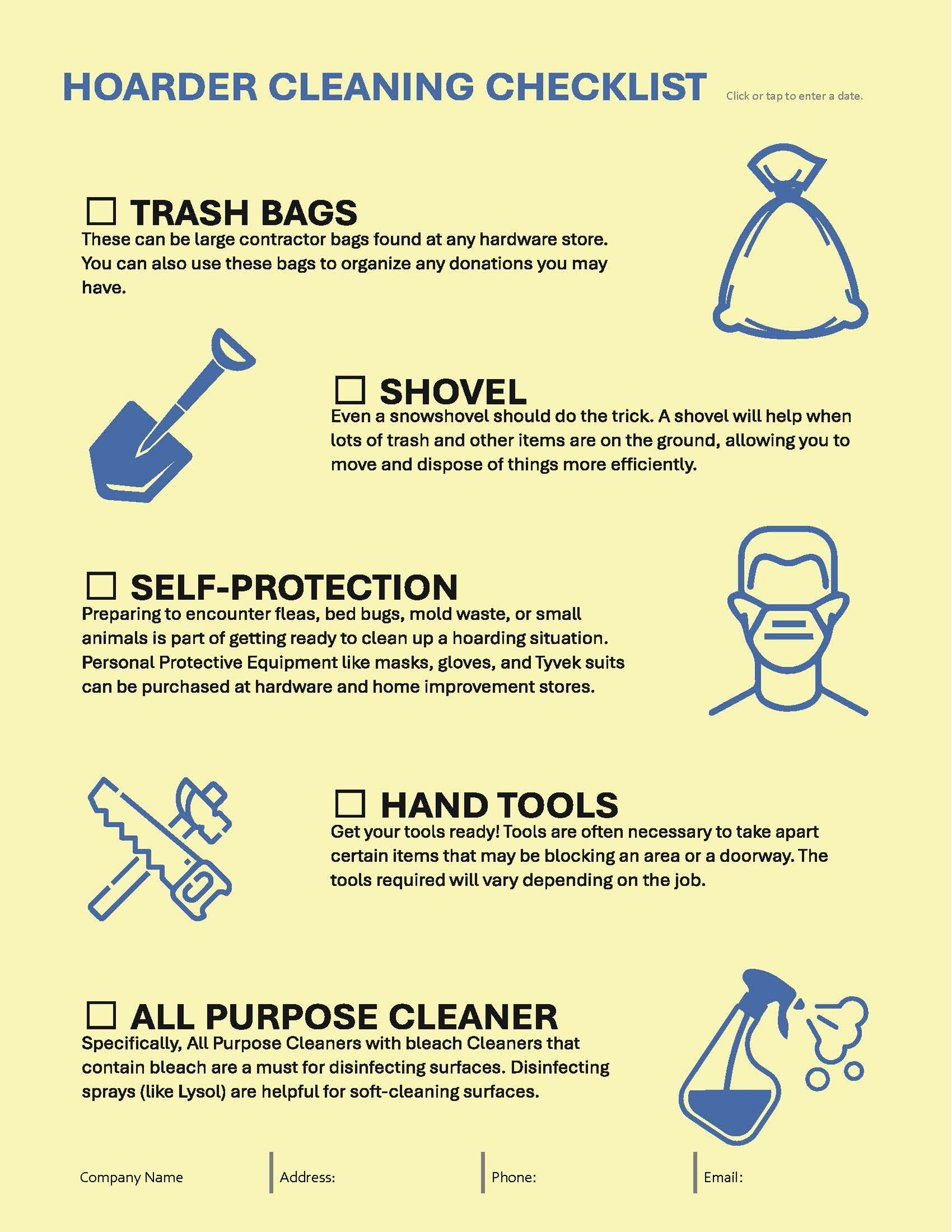
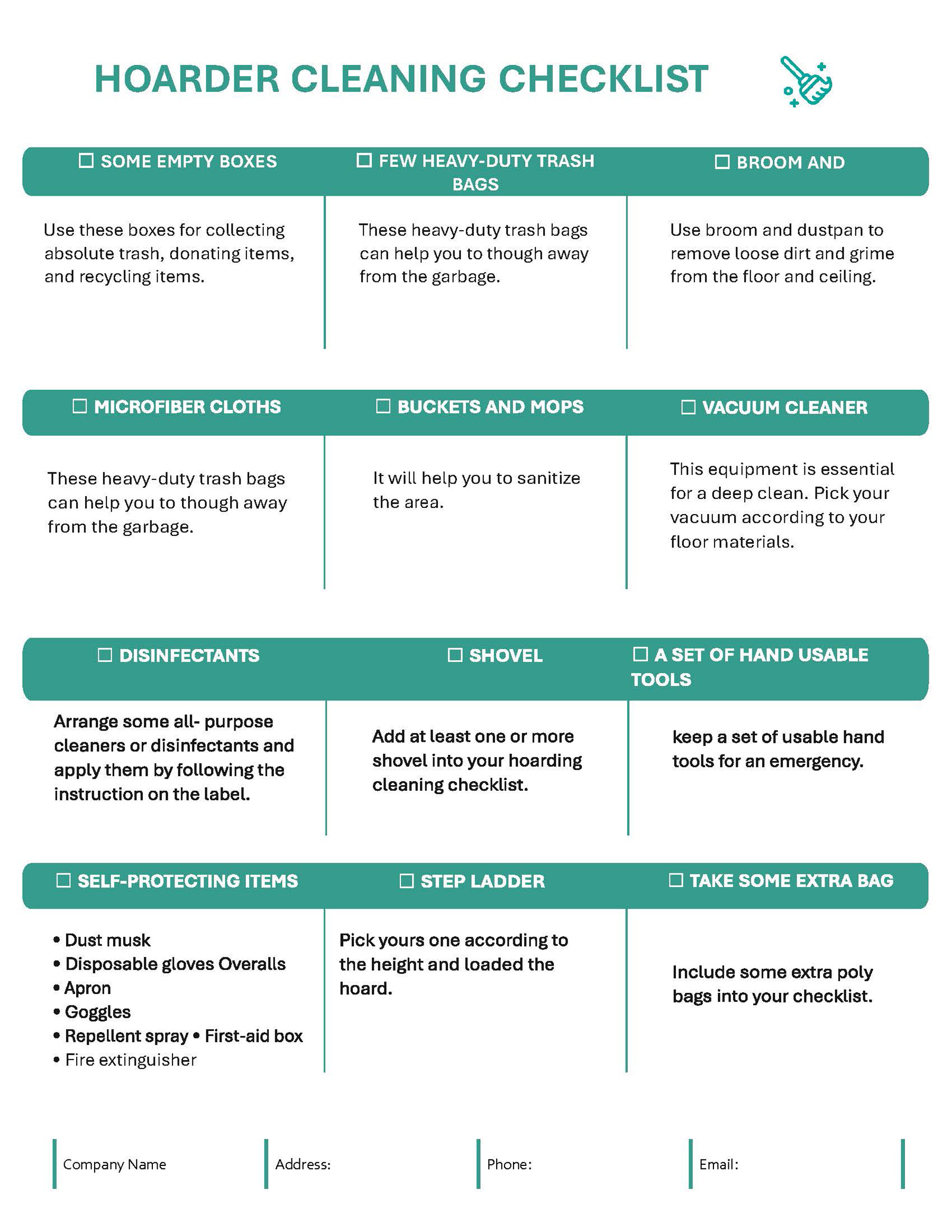
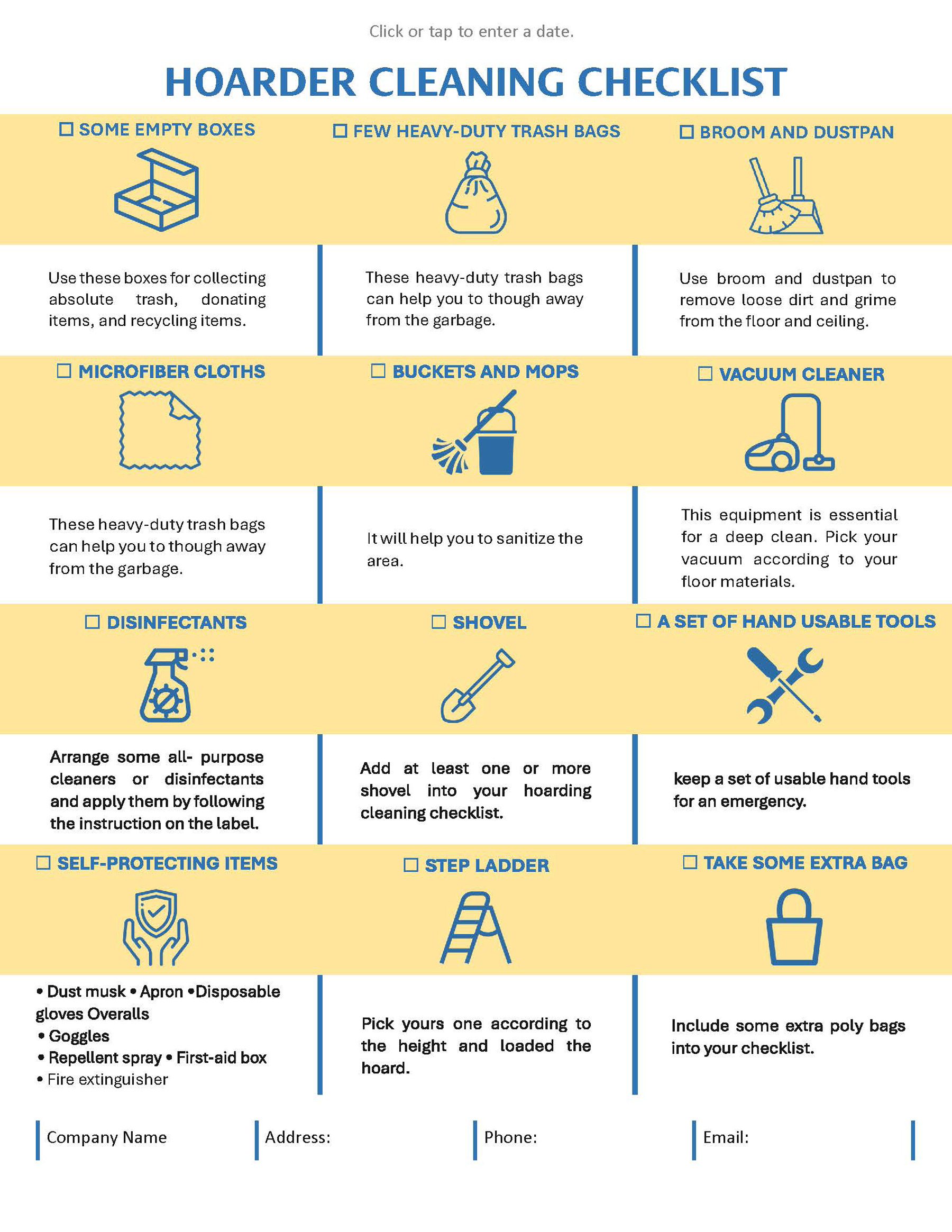
What are the Key Elements of a Hoarder Cleaning Checklist?
A checklist is an invaluable tool for managing your hoarding disorder. It guides you on what steps to take to get rid of unnecessary items, clean your living space, organize remaining items and create a storage system to prevent cluttering your space room again.
Below are basic elements that should be present in a checklist used to help hoarders clean their living spaces:
Preparation
The first task added to a checklist is the preparation process to help you mentally get ready to dispose of things you are attached to and for the amount of work awaiting you. Be sure that the cleanup is something you truly want and need, as acknowledging the problem is always a good starting point. Then, assess the situation and create an execution plan and determine if you will require assistance from people close to you or professionals such as a pro-organizer, therapist, or social worker to help you make decisions.
Assemble any cleaning tools and supplies, such as garbage bags, boxes, sponges, brooms, vacuum cleaners, gloves, etc., that will be needed depending on the type of work involved. You can also set a target date for when you want to complete the plan. However, ensure that the goals and schedules are realistic to avoid getting frustrated in between, which may be counterproductive.
Sorting items
A good plan will require you to sort items first to determine what to discard, keep, donate, or recycle. A popular sorting approach is the three-box method which requires you to label three boxes as keep, donate, and discard. Then, clear out your house, one room at a time, and place each item in its right box. Do not do this hurriedly to avoid getting anxious or overwhelmed at the idea of discarding or donating your possessions. However, items of high sentimental value, such as family heirlooms, legal documents, artwork, etc., can be preserved.
Decluttering
The next task on the checklist is the decluttering process, where you reduce the number of possessions. This includes broken, expired, and duplicate items. Be objective, carefully go through the clutter and dispose of anything of no value or use. You can set a goal to reduce your possessions by a certain percentage; this can help you remain objective.
Cleaning surfaces
You should then clean surfaces to remove dirt, dust, and debris on furniture, appliances, and other surfaces. Before starting the cleaning, familiarize yourself with the various cleaning tools and substances meant for different surfaces, such as fabric, steel, wood, plastic, etc. You may have to clean each surface several times to remove any dirt that may have accumulated over time.
Deep cleaning
This task requires you to undertake intensive cleaning and restoration or renovation of different sections of the house. It includes cleaning floors, windows, ceilings, carpets, etc. Deep cleaning is intensive and laborious, and you will thus have to allocate enough time to do it effectively. Then, attend to damage caused by clutter, such as rust, mold, holes in walls and floors, etc. Typically, renovations should be handled by a professional. Examples of renovations include repainting, retiling, fixing broken systems, re-flooring, plumbing, etc.
Creating a storage system
A checklist should include creating a storage system in your hoarder cleaning plan. The storage system is meant to preserve any retained and future possessions. It should be functional such that it prevents you from keeping unnecessary items. The system can use boxes, containers, or shelves to neatly organize and properly categorize items.
Maintenance
The last task on a checklist is maintaining your house clean and organized consistently. This element should define any cleaning and organizing habits you intend to adopt in the long term. This may include scheduled cleaning and decluttering. You can also consult a professional to help you formulate a feasible plan with realistic goals to avoid cluttering your house again.
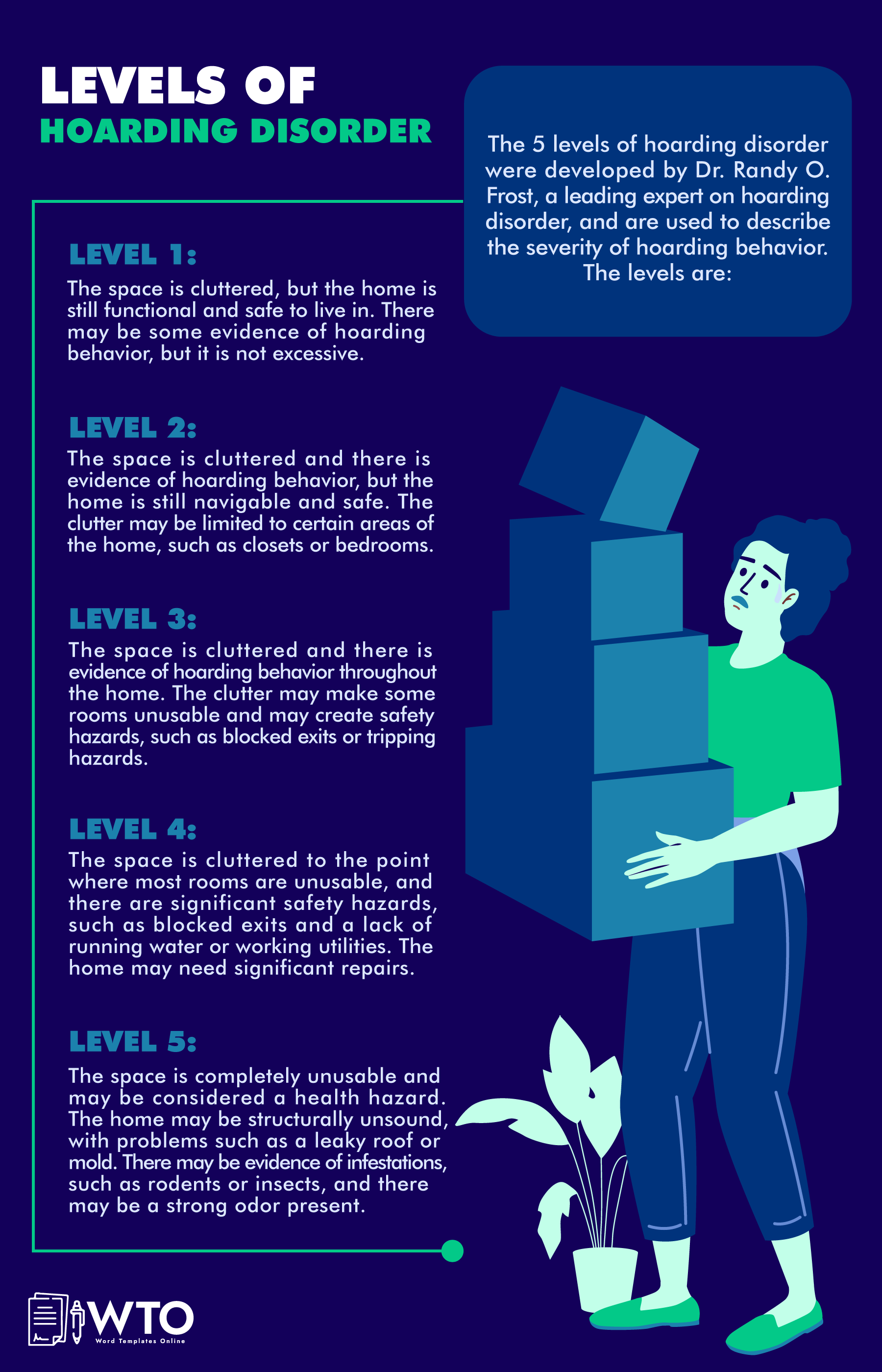
Types of Hoarder Cleaning Checklist
You can use variations of this checklist depending on the level of hoarder cleaning you want and the severity of your condition. It is a good practice to always seek professional help from your therapist or healthcare provider to determine which type of checklist suits your situation.
Below are common types of checklists you will find online:
Basic hoarder cleaning checklist
A basic checklist is a simple list of the key cleaning and organizing tasks you should undertake when cleaning your house. Typically, these tasks are sorting items, decluttering, and deep cleaning. It may also have best practices for storing items and maintaining your living space clean and organized. It is suited for beginners or people with less severe hoarding disorder.
Comprehensive hoarder cleaning checklist
A comprehensive checklist enlists extensive and more detailed steps on how to effectively clean and organize your living space. It also includes aspects such as a timeline, tips, and strategies for managing the emotional and psychological hurdles of hoarder cleaning. The checklist also includes a follow-up plan with your therapist, social worker, or other professionals involved.
Professional hoarder cleaning checklist
This type of checklist is tailored for professionals specialized in hoarder cleaning. It outlines standard cleaning procedures and outlines advanced procedures like odor removal, biohazard cleanup, and structural repairs that may have to be undertaken.
DIY hoarder cleaning checklist
A DIY checklist is premade to guide hoarders who want to clean their living spaces themselves on how to do it without assistance from professional cleaners. It is interactive and may include tips to stay motivated and strategies to increase efficiency and maintain progress until the cleaning is completed.
note
The type of cleaning checklist you use depends upon the intensity of the disorder. Refer to this infographic to know about the different levels of hoarding disorder.
Best Practices for Using Hoarder Cleaning Checklist
It can be difficult to overcome your tendency to hoard possessions and clear your living space as someone with a hoarding disorder. However, adopting the best practices of using a checklist for hoarder cleaning can greatly impact how effective your efforts become.
Below are several best practices to ensure a checklist is beneficial to you:
Start with a basic checklist
You do not have to clear out everything at once. You can do it in phases to avoid getting overwhelmed. So, first-timers should start with a basic checklist, with simple and direct steps that reduce the amount of clutter. Then, a comprehensive checklist with a more detailed plan can be used to further reduce clutter in the house.
Customize the checklist
There is no one-size-fits-all checklist for hoarder cleaning. Therefore, it is important to tailor a checklist to your specific needs and circumstances. You can do so by adding or removing steps to align the checklist with your plan, type of clutter, and level of cleaning needed. A personalized plan is more manageable, effective, and less overwhelming.
Set realistic goals
Setting realistic goals and expectations for your cleaning plan is important to avoid not fulfilling them and ending up demotivated and unsuccessful. You can do so by collaborating with your therapist or social worker and narrowing the cleaning plan into small manageable tasks. This, in turn, prevents emotional and physical exhaustion from trying to do everything at once.
Seek professional help if necessary
Always seek professional help if you have a severe hoarding disorder. Professional healthcare providers will guide you on how to manage the disorder and clean and maintain a tidy house. Also, hire a professional if a specific task in your plan requires technical know-how, such as removing biohazard material or re-flooring.
Enlist support from others
You do not always have to execute the plan alone. You can bring your relatives, friends, and professionals on board. This will help alleviate the emotional and physical strain that comes with hoarder cleaning. Also, having a support system increases motivation and helps clean your living space faster.
Celebrate progress
Deep house cleaning is a long process that may take days or weeks. So, ensure to celebrate small successes, such as finalizing an entire room, that mark progress. Also, you can take before and after pictures to visualize your progress.
Use the checklist as a guide
Use the checklist as a roadmap and not a rulebook. This way, you can alter your plan based on the situation or if you discover more efficient methods of cleaning your living space. This flexibility will also help you avoid putting too much pressure on yourself, which can be mentally exhausting.
Final Words
Hoarding can result in unsafe, untidy, and disorganized living spaces. So, it is advisable to actively manage this disorder by cleaning and organizing your room or living space. A checklist can be used as a list of what you are required to do to ensure you discard what you do not need and keep valuable possessions.
Such checklists are available online in different file formats, such as PDF, to assist hoarders with cleaning their houses. However, downloaded checklists should be customized to suit each person’s specific needs and situation. You can also seek help from professionals such as therapists and social workers when customizing the checklist in order to formulate effective cleaning plans.


